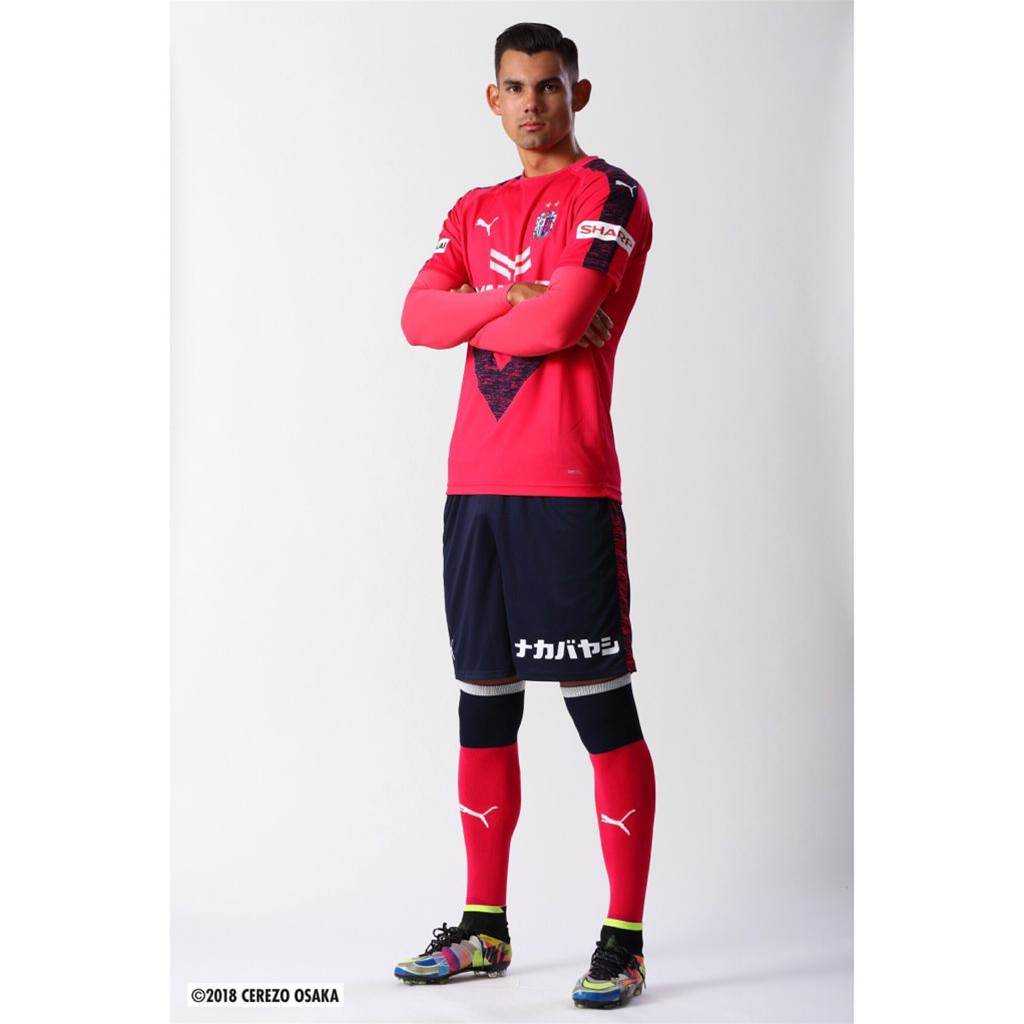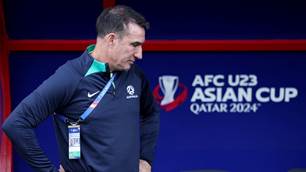Swapping the relative safety zone of the A-League for a brutal three-session-a-day pre-season at J-League outfit Cerezo Osaka has taken Olyroo striker Pierce Waring’s fitness and power to a new level.
The 20-year-old former Melbourne Victory striker has come off a punishing pre-season in Japan - one of the most physically demanding football environments in the world - with his club Cerezo Osaka.
And after six months at the J-League outfit, the tall and powerful frontman feels he’s now adjusting to the J-League’s incredibly high physical demands.
“The first six months was probably the hardest,” Waring told FTBL in the Malaysian capital Kuala Lumpur.
“Coming from Australia physically it was just a completely different level.
“The amount of running at the club we do and amount of hours that we train, the mentality in Japan is to do more, more and more.”
Waring, who scored in the AFC Champions League for Victory against Shanghai SIPG last year, was accustomed to one session a day at his Victorian club and being home by midday.
In Osaka, he’s at his club by 8 am and usually out by 4.30pm.
“The philosophy at Cerezo is if you’re under 24-25 they really smash you.
“Once you’ve hit that age, and you’ve got that football conditioning in you, then you can relax and you have that in you for the rest of your career.
“That’s the main reason I wanted to go to Japan. Because of the training and coaching and to be able to improve.
“At Victory, it was one session a day. I enjoyed it but it was quite relaxed. It was quite enjoyable but in Japan doing two or three sessions a day and just the amount of running, especially in pre-season, it's tough.”
Pre-season for Waring was brutal. In two camps they’d train three times a day for a week.

“It was probably the toughest pre-season I’ve ever had,” he added.
The first session was early morning. Followed by a second mid-morning and the third session mid-afternoon.
One day he estimated he’d ran an estimated 22 kilometres.
“The first session was a 6.45am cross country run for seven kilometres," Waring said.
"Then 9.30am was a conditioning session with short sprints and 3.30pm was a technical session with the balls. It was just training, eat, sleep, recover and repeat.
“It was hell while I was there but coming out of it - when you start playing games, because you’re so used to training with such high loads - it almost feels like you can last the full 90 minutes.
"We did between 15-22 kilometres each day in training while in a game you average about 10-12. In Australia, I’d feel completely stuffed after a game. Now after a game, it feels like a normal session."
"Surprisingly enough, you get used to the three sessions a day. It began to feel normal for me. The toughest was the first six months when I came to the club, especially the first two months.”
Waring’s mother is Japanese and so he has a heritage link with Japan, though he’s also lived in Shanghai and Japan earlier in his life in between spells in Melbourne, where he eventually played for Victory.
Waring plays in J3 for Cerezo, which is effectively an U/23 league for reserves, but he trains with the first team.
This season he’s hopeful of a first team debut as he becomes more accustomed to life at the Japanese giants. For their part, the club certainly believe in him, tying him down to a long-term contract.
Meanwhile, Graham Arnold’s Australian U/23s will likely require superior fitness over the coming year as they navigate a tricky Olympics qualification route.
This week they’re in Kuala Lumpur for a training camp and two friendlies before flying the short distance to Cambodia for an AFC Olympics qualifier tournament against the hosts, South Korea and Chinese Taipei.

The FFA last month chose not to send the Olyroos to an U/22 tournament in Cambodia featuring the hosts, a tournament that was played on the same artificial surface awaiting the Aussies in Phenom Penh.
The heat of South-East Asia will be testing for all the players but with Waring’s fitness regime, he believes he should be able to adapt quickly.
“In season, we do pre-season running once a week too, which is very difficult with just running, conditioning and agility. It’s mainly power and explosive work. But it’s mainly running with a nine-lap running circuit," he explained.
“Nine laps of the pitch with the pace speeding up and slowing down. It took me about two months of doing it once a week just to be able to do it in the time set.
“Then you start training."
Related Articles

Campaign of pain: FA's Olyroos inquest will pile heat on Vidmar

Olyroos can't crack Jordan code in scoreless cup draw












